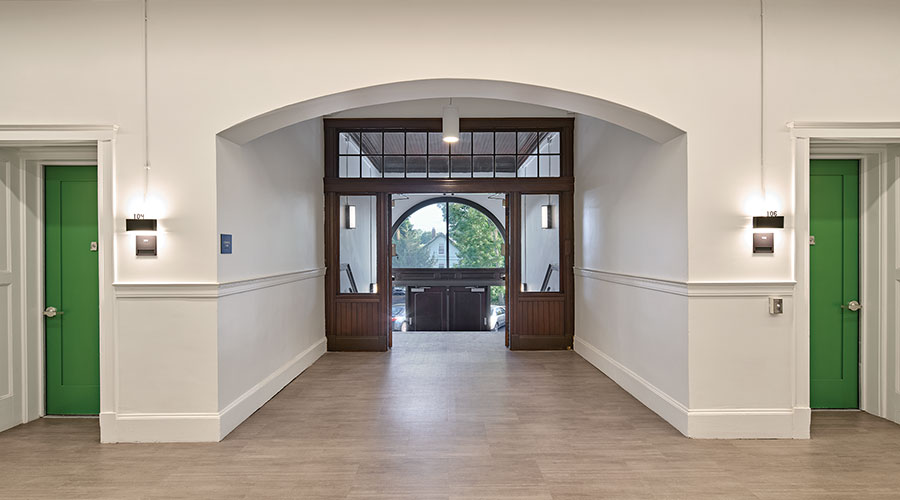Technology Can Help Support Workplace Efficiency
Productivity gains in these kinds of workplaces are not simply space-based; they are also very much supported and enabled by technology. New technologies for collaboration and for indicating presence and activities (such as instant messaging services) provide mobile and remote workers with a sense of collaboration and connectivity to their teams and co-workers. The "place" of the office is replaced by the new "places" of the network.
The role of technology in enabling work to happen in new ways suggests that in a sense work is no longer place-dependent, or rather that the place of work is now mediated as much through technology as it is through space. Our community of work is the network rather than the office. This has enormous implications for the design and the architecture of workplaces.
An interesting paradox is that the design of the physical office actually becomes more significant as work becomes more virtual and less dependent on space. The design of the office has to compete with the ease and convenience of the virtual world. The office should be designed to offer a strong identity and culture, to provide attractive and supportive spaces and technologies for effective work, and to be a social hub for the community.
There are several new demands for the effective office design as a result of these changes, changes that have enormous impacts on how workspace is programmed, managed and used. These are some of the impacts to look out for and plan with:
- Design for a range and diversity of settings for individual and collaborative work, quiet versus noisy areas, and "owned" versus "shared" spaces.
- Emphasize the office as a hub for collaboration; ensure that the office is a highly utilized center for interaction and face-to-face collaboration.
- Make the office a place for using higher value technologies for communication, recognizing that work patterns will involve both face-to-face interaction and technology to integrate remote participants.
Diversity of Space
The resulting workspace is much less uniform. It no longer has a high proportion of individual cubicles and a few meeting rooms. The direction is towards a wide range of different kinds of settings allowing for individual heads down and concentrated work, project work, collaboration (both formal and informal), and different kinds of teamwork.
The implications for how we program and manage offices are significant. Planning these kinds of workplaces involves a much deeper understanding of the business needs and culture of the organization. It is essential to involve the leadership and users in envisioning future patterns of work and the role that technology, ways of working and space will play in the new workplace. The new ways of using space represent a big change in behavior and expectations. Thorough user research with those moving into the new office is important if facility managers are to understand and plan for their needs. Measuring the impact of the new workplace on business performance and user satisfaction is essential to making the business case for larger scale implementation. Managing the transition to the new ways of working and using space becomes part of designing the office.
The opportunity to create workplaces that add to the performance of the business and that increase user satisfaction means the workplace is no longer just about the design of space; it is about the creation of the successful business.
Andrew Laing, Ph.D., is managing director of DEGW North America. Since establishing the firm’s North American business in 1998, he has worked with clients including Accenture, Fidelity Investments, Google, JWT, Microsoft, GSK, Nike and the United Nations. Laing is the co-author of New Environments for Working and The Responsible Workplace.
METRICS
Gauging the Performance Impact Of Workplace Redesign
At companies such as Accenture, Cisco, Deutsche Bank, GlaxoSmithKline, Microsoft and Lilly, where projects have been implemented to change the paradigm regarding mobility and choice of where work gets done, there have been measurable increases in reports of user satisfaction and workplace effectiveness. Staff report feeling that they have more control of how and where their work gets done; they report the benefits of being able to choose quiet spaces for concentrated work when needed; they enjoy the informality and speed of communication associated with more visible and transparent environments. Some have reported increased speed of decision-making and the ability to accelerate their work.
Measurement of business performance improvements associated with new ways of working in re-designed workplaces is critical. Surveys and observations of staff before and after the workplace change have shown that innovative workplaces have significant impact on performance in areas such as:
- Reduction in volume of email
- Fewer formal meetings
- More ad hoc and informal meetings (resulting in faster communications and decision-making)
- Higher awareness of what others are doing and working on
- Reduction in time lost to distractions and ineffective meetings
- Faster turnaround on feedback from colleagues and managers
— Andrew Laing
|
Related Topics:












